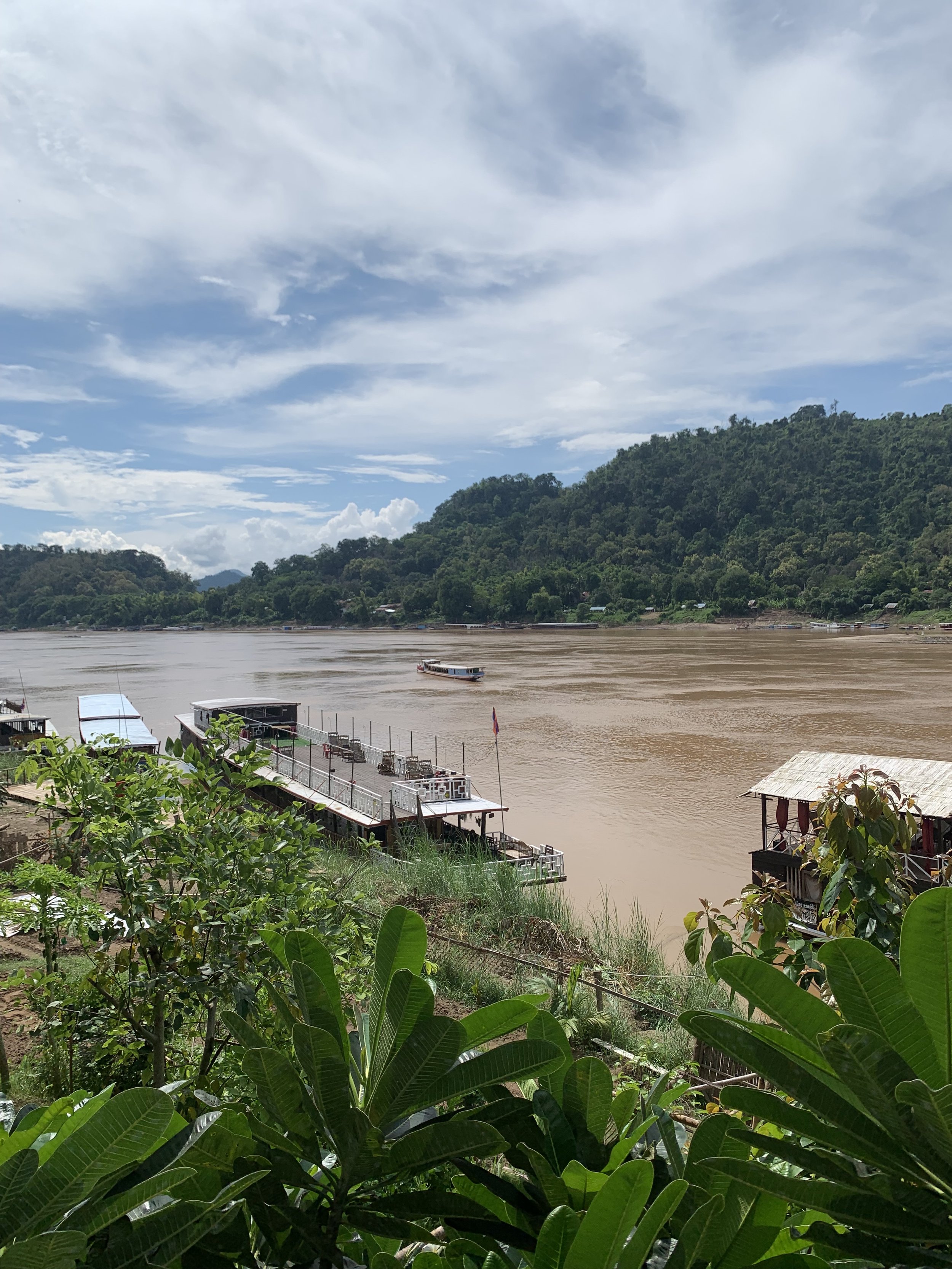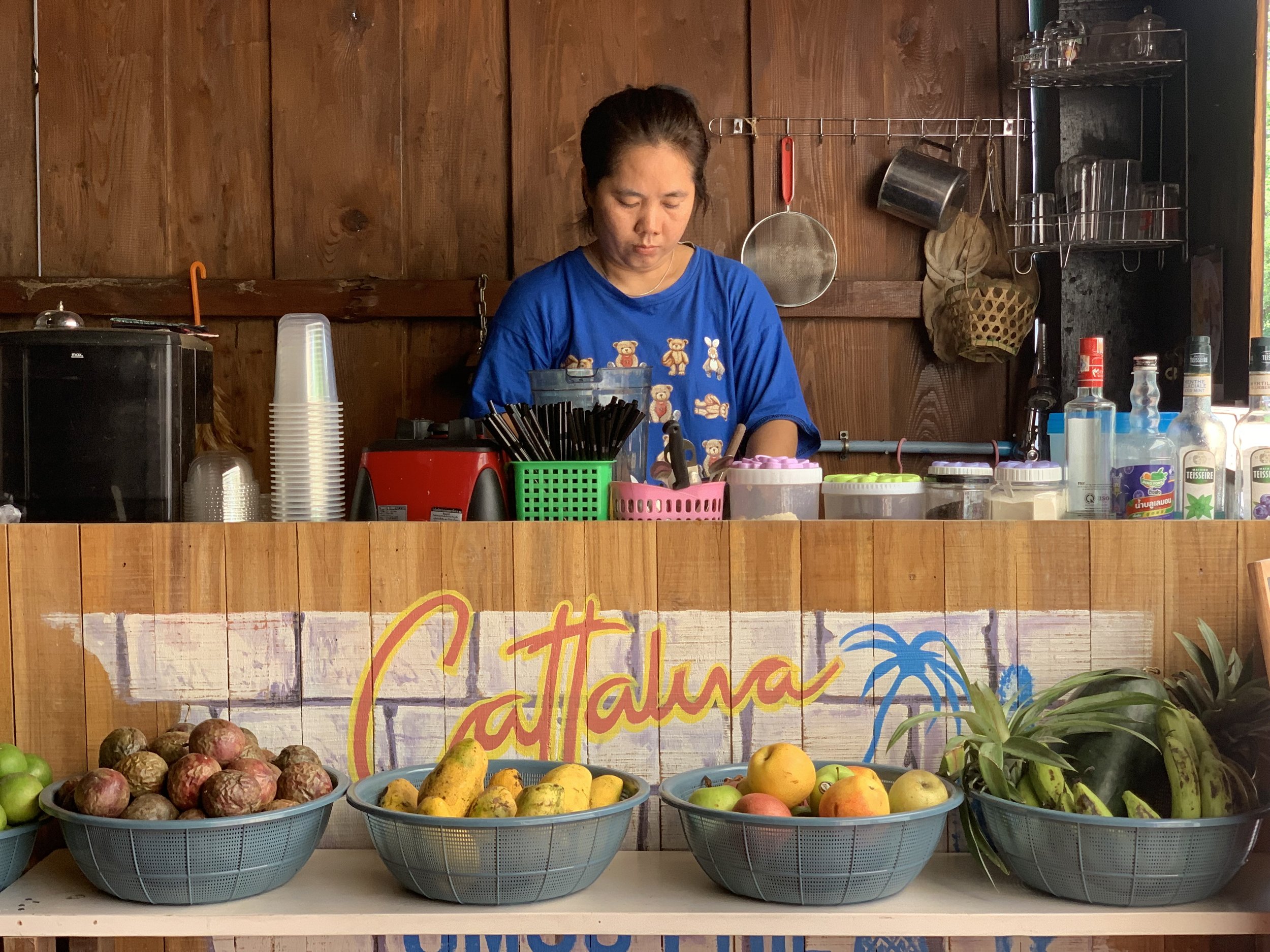Use Horizontal view for better visual experience
Our Laos Journal
About
As a family of six, our journey reflects a commitment to understanding the intricate relationships between nature, culture, and conservation around the world. Each destination we explore reveals powerful narratives of coexistence and conflict that shape the identity of its people and landscapes.
We are honored to experience ancient traditions that honor the earth, while also learning about contemporary efforts to safeguard our planet. This dynamic engagement helps us appreciate the balance that must be maintained between development and preservation. We Journal as a family in an effort to capture the lessons and revisit them in the future.
Throughout our travels, we closely observe how cultural heritage and environmental stewardship interact, sometimes harmoniously and at other times in tension. By immersing ourselves in diverse communities, we gain insights into their unique challenges and triumphs.
Together, we are navigating this complex terrain, uncovering the lessons that each place offers about resilience, adaptation, and the shared responsibility we all hold in caring for our planet. Thank you for joining us on this enlightening journey.
Let’s unpack Laos!
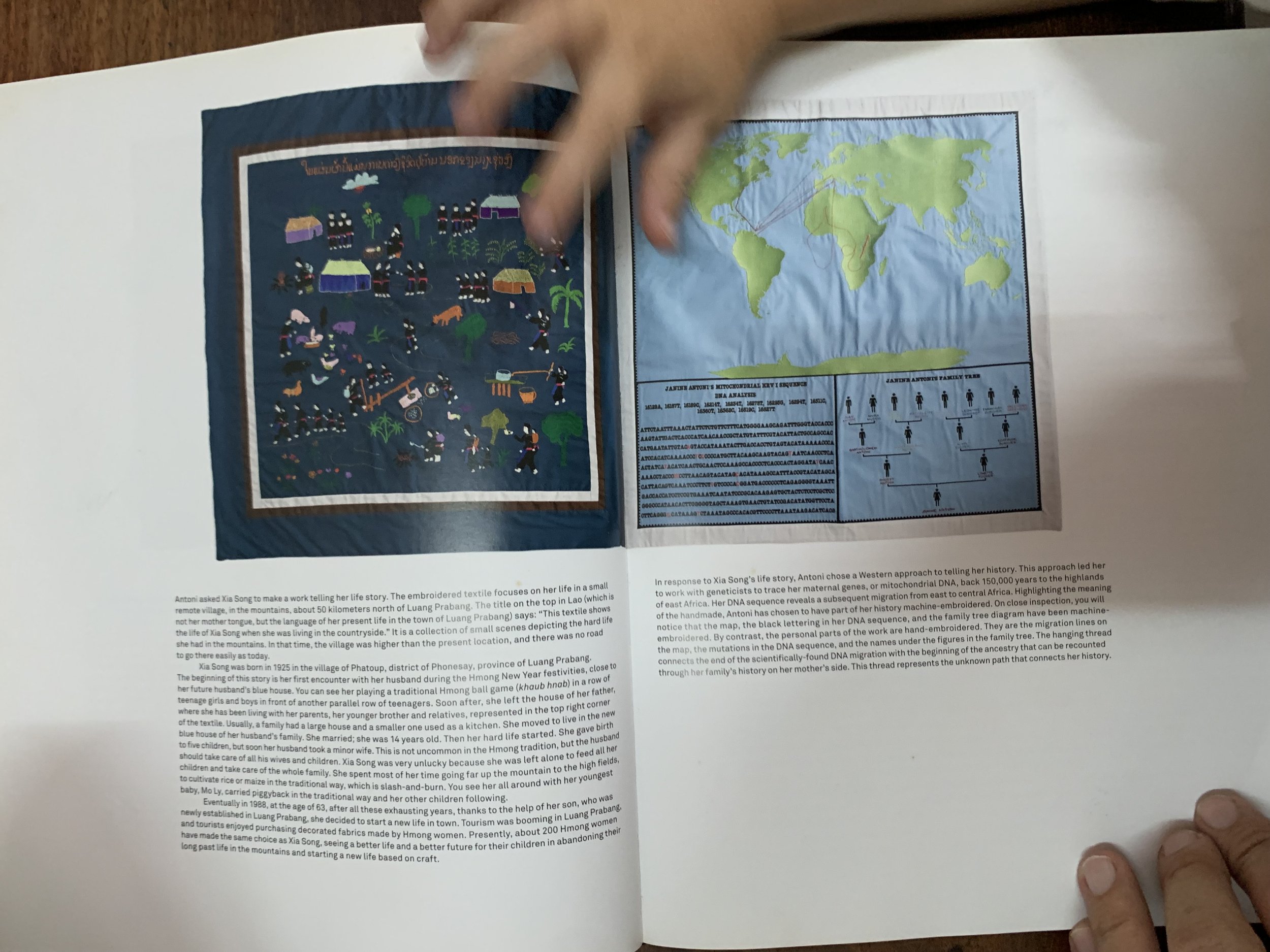
Let’s Start Off With The Highlands
It turns out Africa is breaking apart, literally!
To make sense of the present—its spectral hotels, its crime-packed SEZs, its railway slicing through rice paddies—one must begin with the old bones of Laos. This is a landlocked nation, cupped in the palm of Southeast Asia, squeezed tight by Thailand, China, Vietnam, and Cambodia. Mountainous and mysterious, the land itself is aggressive, with limestone outcrops and sharp, green ridges plunging into foggy valleys—ancient coral reefs thrust skyward by old tectonic upheavals, and now honeycombed into shadowy caves.
Laos is, in almost every sense, a country between: between jungles, powers, histories, and destinies. Every road claws its way along riverbanks, up switchbacks. Once, the drive from Vientiane to Luang Prabang in the north took ten hours—every curve a negotiation with gravity and time. But now, in the space of two rushed, air-conditioned hours, the “Lane Xang” bullet train whisks you from the Thai border to China’s doorstep. The rice fields flicker past the window as if you are watching someone else’s dream.
Mekong River is the Liquid Heart of the Land
The Mekong River is the great equalizer, its waters carrying silt and secrets from the Tibetan highlands to the wide delta in Vietnam. In Laos, the river is not just a boundary but a lifeline and a memory keeper. Along its banks, civilizations once rose and faded—Funan, Khmer, Lane Xang—their palaces now melted into jungle and temple, their kings remembered in epics sung when the rains arrive.
It is the Mekong that gave rise to Luang Prabang, the city of golden temples, French pillars, and saffron-robed monks gliding past weathered shopfronts. Downriver sits Vientiane, long the seat of administration and now the unlikely epicenter of regional dreams and deals. Throughout, the Mekong is at once sacred and practical—a border, a highway, a font of rice and fish, a tableau for rituals during the yearly Bun Pi Mai festival, when families gather at the water’s edge to honor ancestors and cast away misfortune.
The river has always drawn traders, monks, and daredevils, its annual floods fertilizing fields and swelling the hearts of poets. Dynasties harnessed its power; colonial plans mapped their futures by its bends and flows; wars carved and redrew lines along its current. Even as boundaries hardened into international disputes, the Mekong pulsed on, indifferent as it shaped new societies, both sustaining and imperiling those who lived by its mercy.

“The river has always drawn traders, monks, and daredevils, its annual floods fertilizing fields and swelling the hearts of poets. Dynasties harnessed its power; colonial plans mapped their futures by its bends and flows; wars carved and redrew lines along its current.”
Tana River
Kenya’s longest river, stretching 1,014 km, it supports agriculture and hydroelectric power, while flowing from the Aberdare Mountains to the Indian Ocean.
Lake Victoria
The world’s second-largest freshwater lake, it supports fishing and agriculture while providing livelihoods for millions in western Kenya.
Athi River
A vital water source for Nairobi, it travels 390 km before merging with the Galana River and flowing into the Indian Ocean.
Lake Nakuru
Famous for its vibrant flocks of flamingos, this soda lake in the Rift Valley is part of a national park and a haven for wildlife.
Ewaso Ng'iro River
Known for sustaining arid and semi-arid regions, it provides water for wildlife and communities in northern Kenya.
Lake Turkana
The world’s largest desert lake, it is a UNESCO World Heritage site, rich in biodiversity and critical to local fishing communities.
A Taste of Laos:
Textiles, Temples, and Transformation
Our hearts (and stomachs) belong to Laos for three quiet blessings: its luminous textiles, its radiant food, and its intricate, enduring cultures. This is a country of contrasts, knitted from the threads of 49 recognized ethnic groups, each with languages and rites spun from different looms. Buddhism bows at every crossroad—temples shimmering with marigolds and fragrant sandalwood, novices collecting alms in dawn’s fresh light.
Family is the fabric: homes cascade with generations, laughter, respect. On the margins of the old city, I visit Ock Pop Tok, the weaving cooperative, and find joy in the way tradition persists, evolving yet resolute, warp and weft building new stories from silks colored in river water and mulberry dye. Here, we are reminded by Carol Cassidy that Laos is a mosaic—basketry, music, festivals—each piece shining in the gentle hush of the mountains.
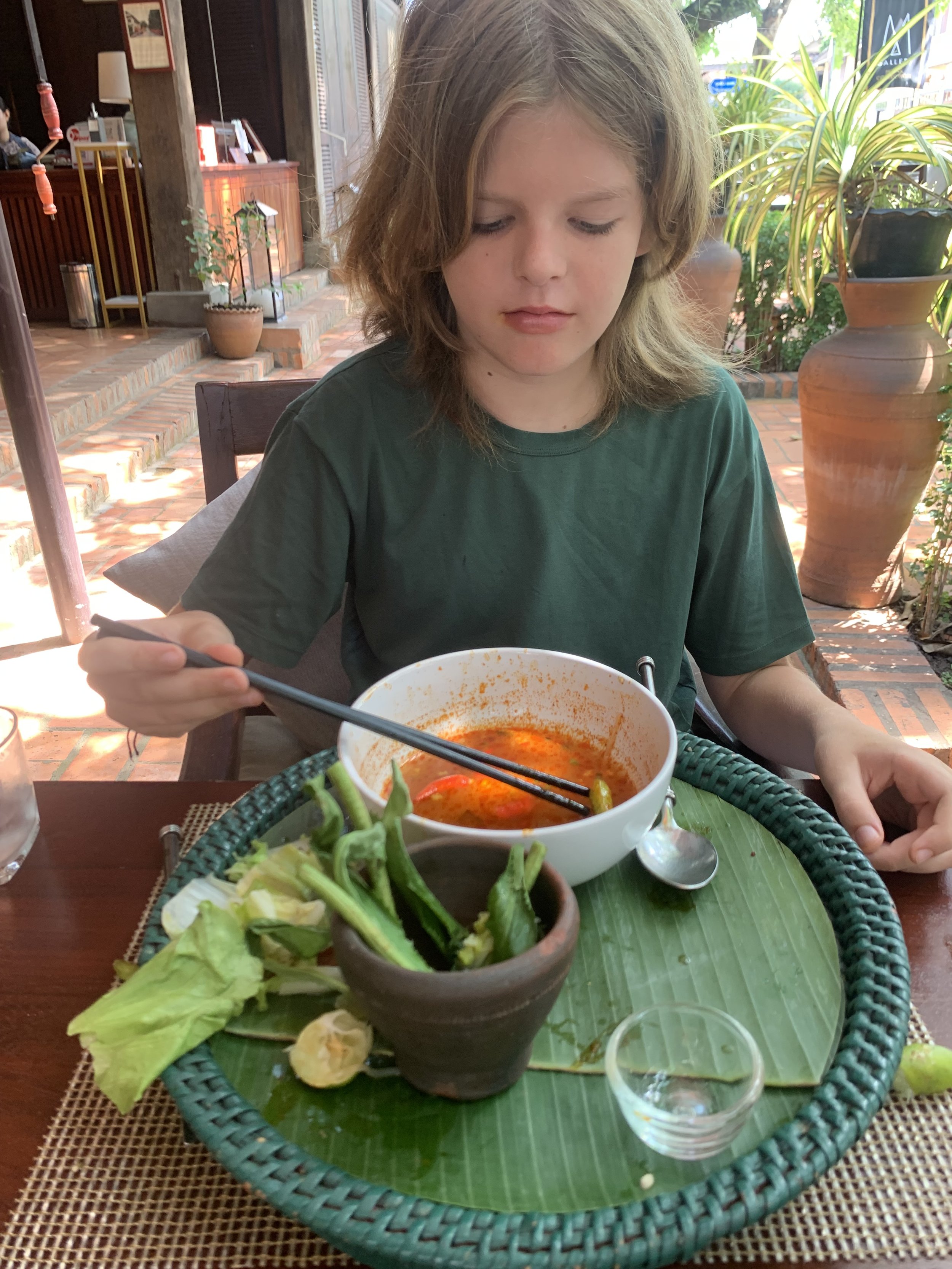

Revolutions and Realpolitik
Laos is run, today, as a single-party communist state. The Lao People’s Revolutionary Party sets direction; President Thongloun Sisoulith leads both party and country, the latest figure in a lineage tracing back to the collapse of monarchy and the birth of the Lao PDR in 1975. Constitutions have come and gone—first under French colonial designs, then as testaments to aspiration and upheaval. Now, the party line is law, and the people are tasked with keeping pace.
It’s Just One Big Party
Yet alongside these official changes, the country has lurched into the global market—the “landlocked” ambition transformed, at China’s urging, into “land-linked.” The “Lane Xang” bullet train—the pride of the new era—bisects the country from Vientiane up through jungle passes to Mo Han at the Chinese border, sewing Laos into China’s Belt and Road tapestry, a modern steel parallel to the ancient Mekong.
Progress and Its Shadows
The silk-smooth urgency of this train cannot be denied. Where once a journey rolled over valleys and villages on worn bus seats, it now flashes by on silver rails, an ultramodern lifeline dropped atop a rural country. Trade surges—electronics, solar panels, automobiles. Chinese tourists pour into Vientiane, some chased by opportunity, others by rumor. Jobs are created; fortunes sought. Vientiane’s rise as a logistics hub is already evident.
Yet the shadows grow long. In Vientiane, stories of money laundering and organized crime travel fast and find little shame. Towers stand empty, facades built to house the profits of scams and trafficking as much as to host tourists. As detailed in reports on “pig butchering scams” and Southeast Asia’s new criminal enclaves, [money laundering networks](https://www.tookitaki.com/blog/pig-butchering-scams-southeast-asia-financial-crime) and human trafficking are little hidden here—part and parcel of the current transformation.
Laos, it seems, has become a laundromat for illicit wealth, its laws bent to fit the convulsions of its new patrons. What should have been a celebration of connection instead feels, at times, like an enmeshment—a co-dependent relationship where, as in all such liaisons, the cost accrues quietly, destined one day to overwhelm.
The President of Laos, Thongloun Sisoulith
“Laos needs to rebuild its economy and become economically independent”
Across the Tracks—Reflections
Not everything can bend. Luang Prabang, for all its newfound reach, still radiates stillness—a timelessness preserved in its old quarters, where I pause once again beneath frangipani trees. Threads of tradition, like those I admired at Ock Pop Tok, stretch quietly from past to future, turning warp into legacy. Just beyond, though, the city expands, rooftops fanning out onto rice fields, the sound of hammers and earthmovers a low drumming beneath the bells.
On the journey north, watching the green blur past the train’s immaculate windows, I wonder if this is indeed progress—a speed that leaves meaning unmet, if not undone. The bullet train is Laos’s second river, gliding over old landscapes, carrying with it prosperity, peril, and questions not easily left behind. For the moment, the land endures, caught as ever between mountains, water, and the choices of those who would bind it to new destinies.
Where the ancient Mekong carved the soul-deep rhythms of Laos, the bullet train now traces a different line—a mirror, perhaps, to the dreams and dramas that chase each other across this beautiful, complicated land.
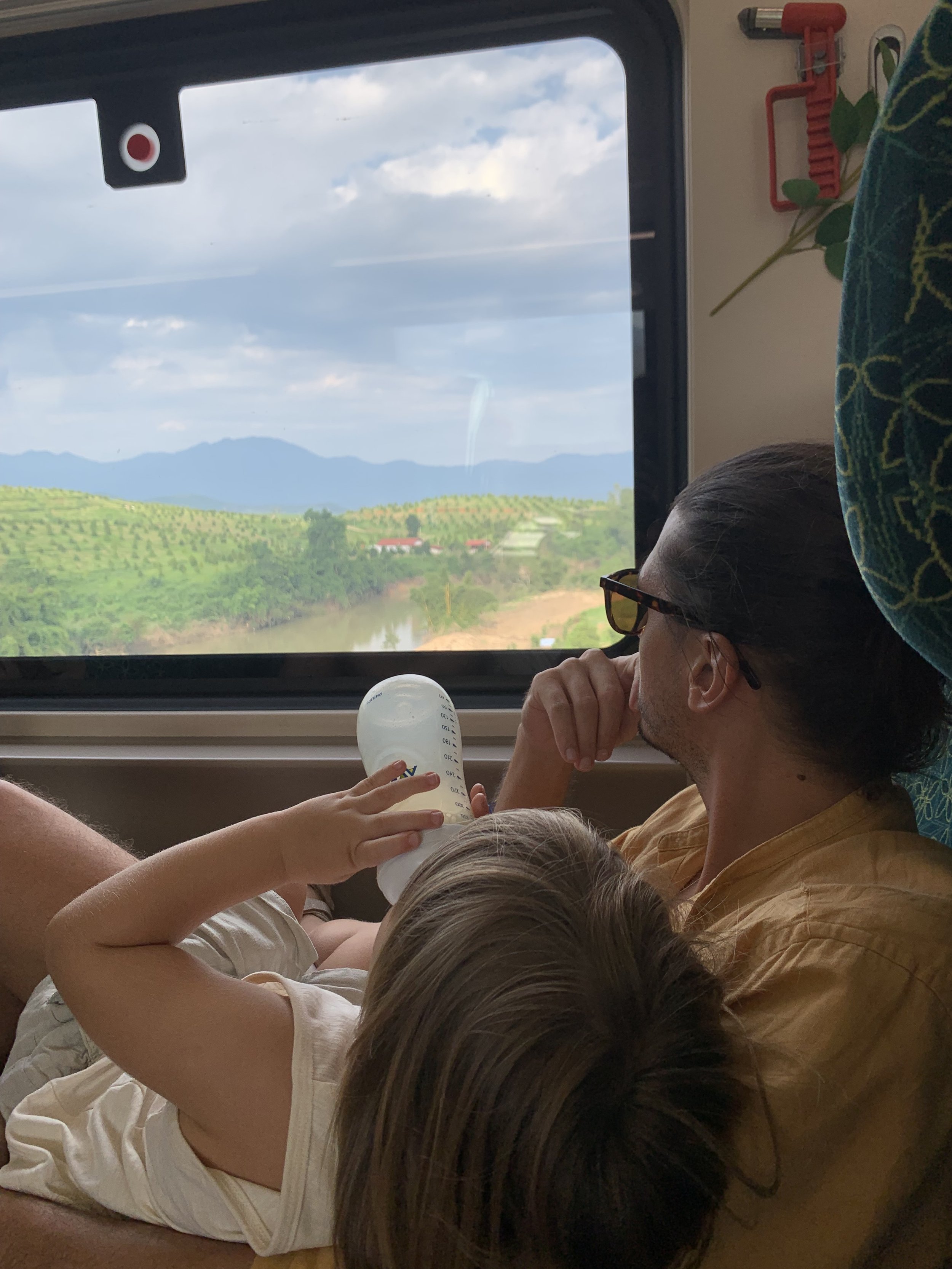

…
ENJOYED LEARNING ABOUT KENYA’S HIGHLANDS?
Kenya’s Coastline coming soon…
Consider joining our community where we connect fantastic people to amazing places and share our learning and discoveries. Stay ahead.



